







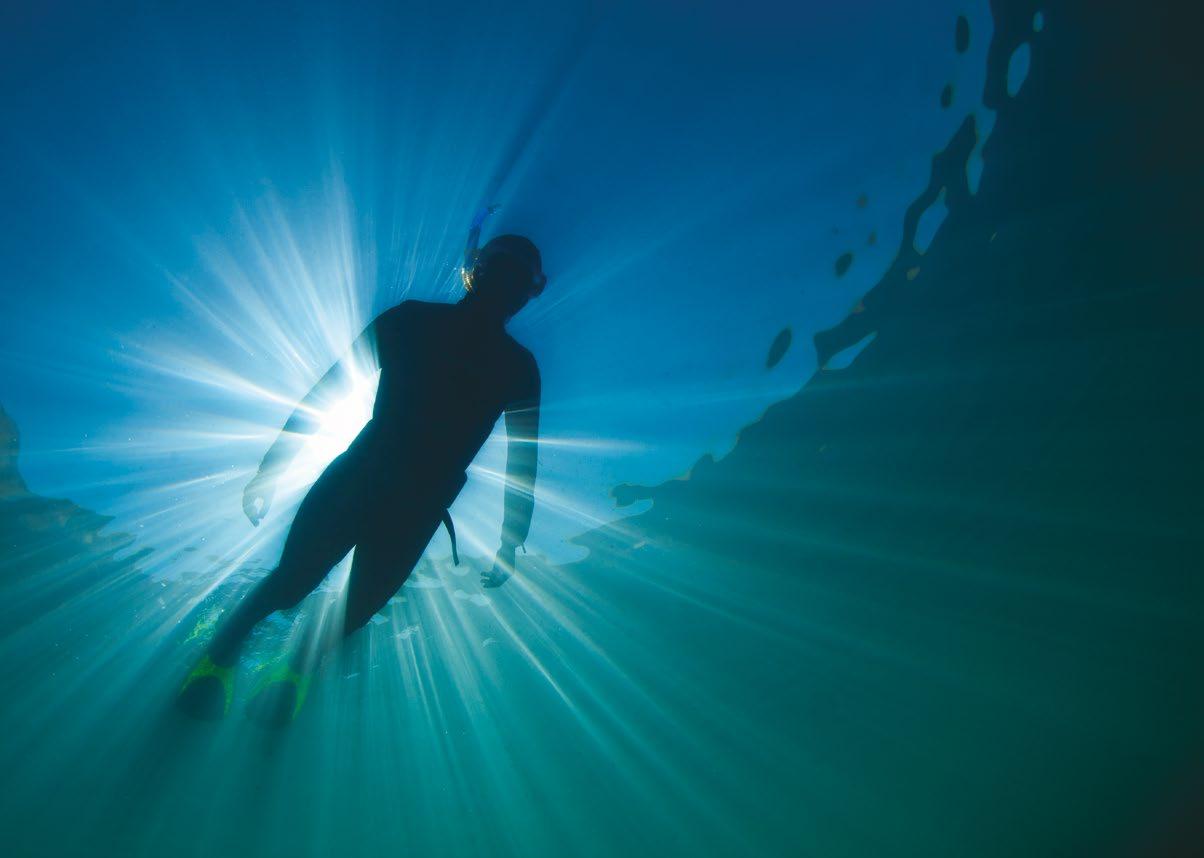
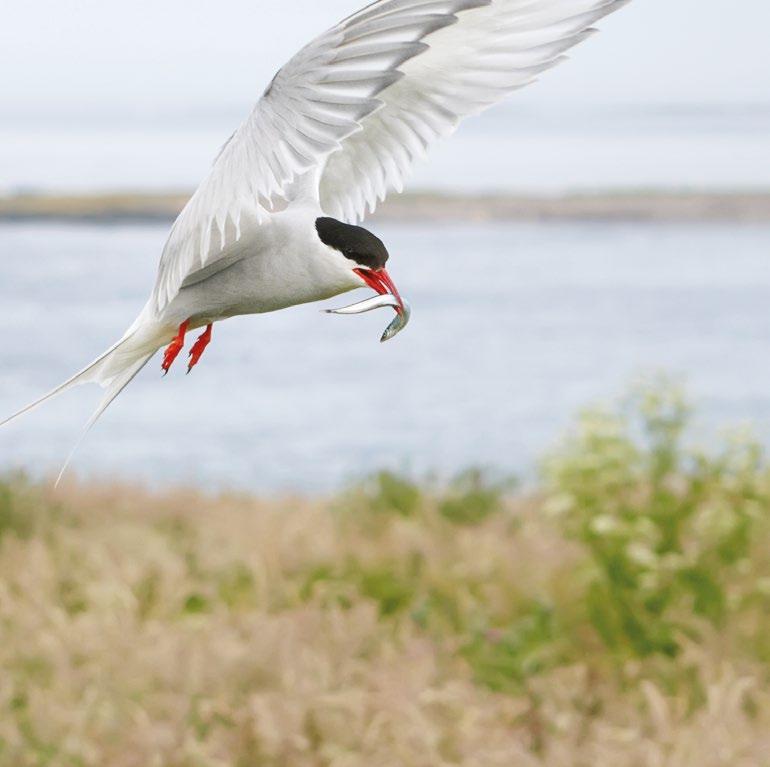

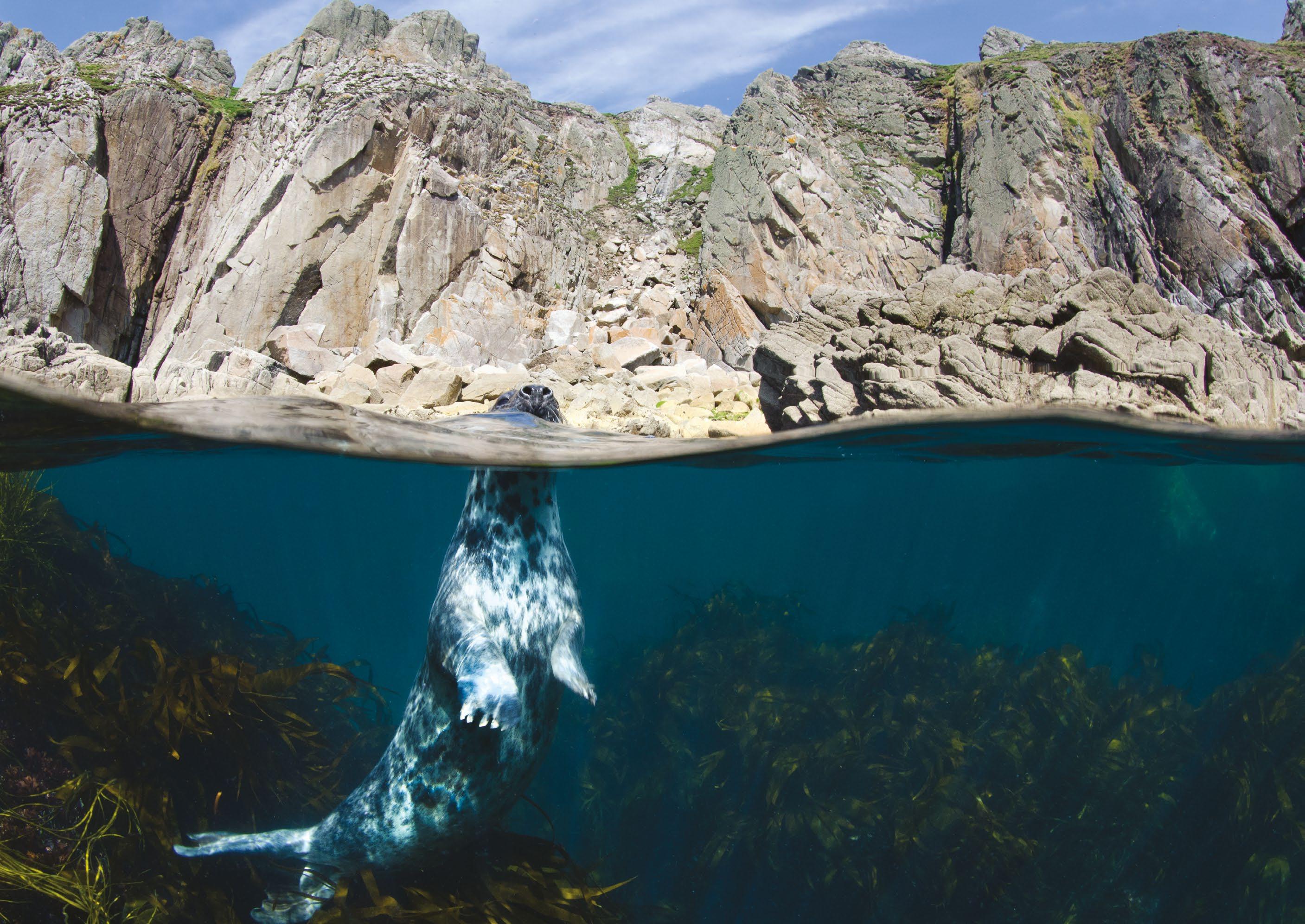
“The seas around the UK are home to the most extraordinary wildlife. For too long we have taken from the sea with little regard for the consequences.”
Sir David Attenborough
We want a thriving, productive, wildlife rich North Sea, resilient to a changing climate and our increasing demands. A North Sea full of once abundant animals and recognised for its beauty and diverse nature. An area where all activities are managed to allow wildlife to thrive and recover. Those that benefit from its many goods and services contribute towards its sustainable use.

“We want a thriving, productive, healthy, wildlife rich North Sea, resilient to a changing climate and the increasing demands we place upon it”.
A healthy wildlife-rich environment is not only valuable in its own right; it is fundamentally important for human health, wellbeing, and our prosperity. A restored marine environment underpins our economy and welfare. Productive, diverse and resilient marine ecosystems are the bedrock of a sustainable society and economy. Take a look at the goods and services our seas provide us with….
Covering over 70% of the Earth’s surface, healthy seas are critical to our lives upon land. But they are suffering. Climate change, unsustainable fishing, pollution and exploitation continue to degrade the health of our seas and the North Sea is no exception.
The North Sea has never been more threatened. Tackling these top five pressures is critical to its recovery.
UK seas failed to achieve ‘good environmental status’ for 11 out of 15 indicators in 20191
The North Sea was once teeming with life; oyster reefs and seagrass beds lined our estuaries, huge tuna and other large fish were regularly caught and kelp forests and saltmarshes hugged our coasts. But the North Sea now groans under the weight of pressure from human impacts. The current system of management has caused the decline in biodiversity and must be overhauled to bring about nature’s recovery. If we are to play our part in restoring ocean health we must urgently deliver drastic measures to enable recovery in the North Sea. To achieve this the North Sea must be managed in such a way as to promote its long term sustainable use to ensure future generations benefit from a healthy resource. In order to address the dual challenges of both the climate emergency and the biodiversity crisis, action must be swift and management actions taken must aim to satisfy multiple policies rather than operating in isolation.
The North Sea is one of the most intensively fished seas in the world. Fishing contributes to the decline in the health of the North Sea in three main ways: taking too much fish, the accidental catching of non-target species and damage to marine habitats through certain fishing methods.
Half of UK fisheries are unsustainably fished2

Burning fossil fuels like coal, natural gas and oil accounts for 87% of all human-produced CO2 emissions. In the North Sea we continue to extract oil and gas which contributes to causing sea level rise, ocean acidification and temperature changes. Marine activities, such as shipping, contribute directly towards these carbon emissions.

Oxygen concentrations in UK seas are projected to decline more than the global average, especially in the North Sea4

92% of North Sea fulmars have ingested plastic5
In the 1970s, fish landings were 4 million tonnes. They have since declined to around 2 million tonnes7.
It’s thought there are no areas of the North Sea seafloor unimpacted by human activities. Certain fishing methods, coastal development, aggregate extraction and infrastructure installation at sea including cabling all have significant impacts on the seabed and wider marine environment.

Pollution takes many forms and comes from a range of sources. Most of the pollutants in the North Sea come directly from land as agricultural run off, raw sewage, plastics pollution or industrial waste. Add in oil spillage and shipping discharges and we have a recipe for disaster.
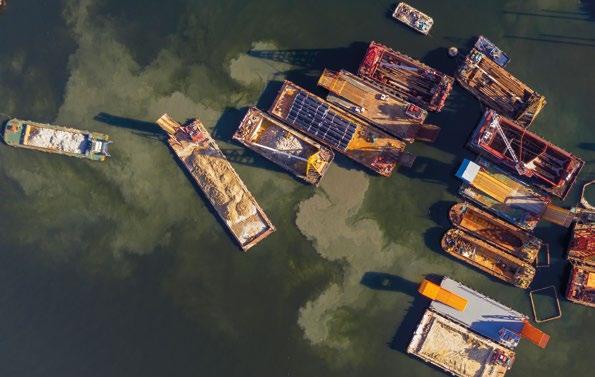
All of the above activities and more combine to create huge pressure on the marine environment. As a result the North Sea is rapidly becoming industrialised. A much more strategic approach to managing all human activities and their impacts must be taken if we are to avoid disaster.
Despite adopting scientific calls to cut emissions by 78% by 20358 , the UK government has committed to continuing oil and gas exploration within the North Sea9
Nearly 60% of all projected offshore wind farm infrastructure installation (including turbines, cabling routes and landing points) could be placed in the southern North Sea.
Each year, it’s estimated we dump the equivalent of one garbage truck full of plastic into the ocean every minute. If we carry on with business as usual this figure will increase to four per minute by 205010.
Both common skate and angel sharks are thought to be extirpated in the North Sea6 likely due to a combination of fishing pressure, climatic change and habitat degradation. These local extinctions occurred within less than a century
An extensive network of special places protects marine wildlife and habitats throughout the North Sea. These areas act as refuges for animals, protecting their homes, nursery grounds and feeding sites
Children grow up swimming in the sea, exploring the shore and spotting marine wildlife. They don’t know it, but their childhood is wilder than their parents
After two decades of protection the North Sea regains much of its former bounty. All fishing is sustainable and jobs are secure
Essential infrastructure projects and activities ensure that the overall impact on our seas is one of biodiversity gain, not loss
Saltmarsh, seagrass, and other blue carbon habitats become a common occurrence, locking up carbon dioxide while improving water quality and natural flood defences, and providing refuge to marine wildlife at the same time
Our seas are cleaner and no longer pose a threat to our wildlife or people. Finding plastics and other waste on our shores and in our sea is a rare occurrence
People take care of their local coasts and inshore waters. They share the space sensitively with wildlife and leave no trace behind
Marine wildlife is thriving through careful, sustainable management of all human activities; there are more fish and sightings of marine mammals, seabirds, sharks, skates and rays are common
Huge progress in understanding our seas has been made in recent decades and we have learned many lessons. We know taking care of nature delivers multiple benefits for wildlife and people. We must urgently take the lessons learned and use them to create a wilder future for our marine wildlife and for us.
Businesses are investing in our seas and their long-term health and sustainable management. All organisations recognise that the natural world is a fundamental asset and this is reflected in business plans and operations going forward
“For too long we have assumed that the sea will provide, without much thought about how to look after this environment, upon which we all depend. If we look after the sea, it will look after us.”
Joan Edwards, Director of Policy and Public Affairs, The Wildlife Trusts
While progress has been made over the last 10 years to protect and manage the North Seas ecological assets, much more ambition is needed to secure its future. Rapid and radical transformation of the way we manage our sea and coastline is necessary if we’re to halt biodiversity loss and restore a healthy natural environment for people and wildlife. Bringing about recovery of the North Sea will require us to meet these key strategic goals:
The North Sea Wildlife Trusts partnership have a big part to play in delivering the recovery of the North Sea. We are already stepping up to the challenge but we need action to be taken at every level from individuals to large organisations and government to make this happen. Our strategy lays out the strategic goals that need to be achieved by this wider community through the development of strong partnerships, close collaborations and a joined up approach to meet our vision. Only together can we bring about the huge change that’s needed.
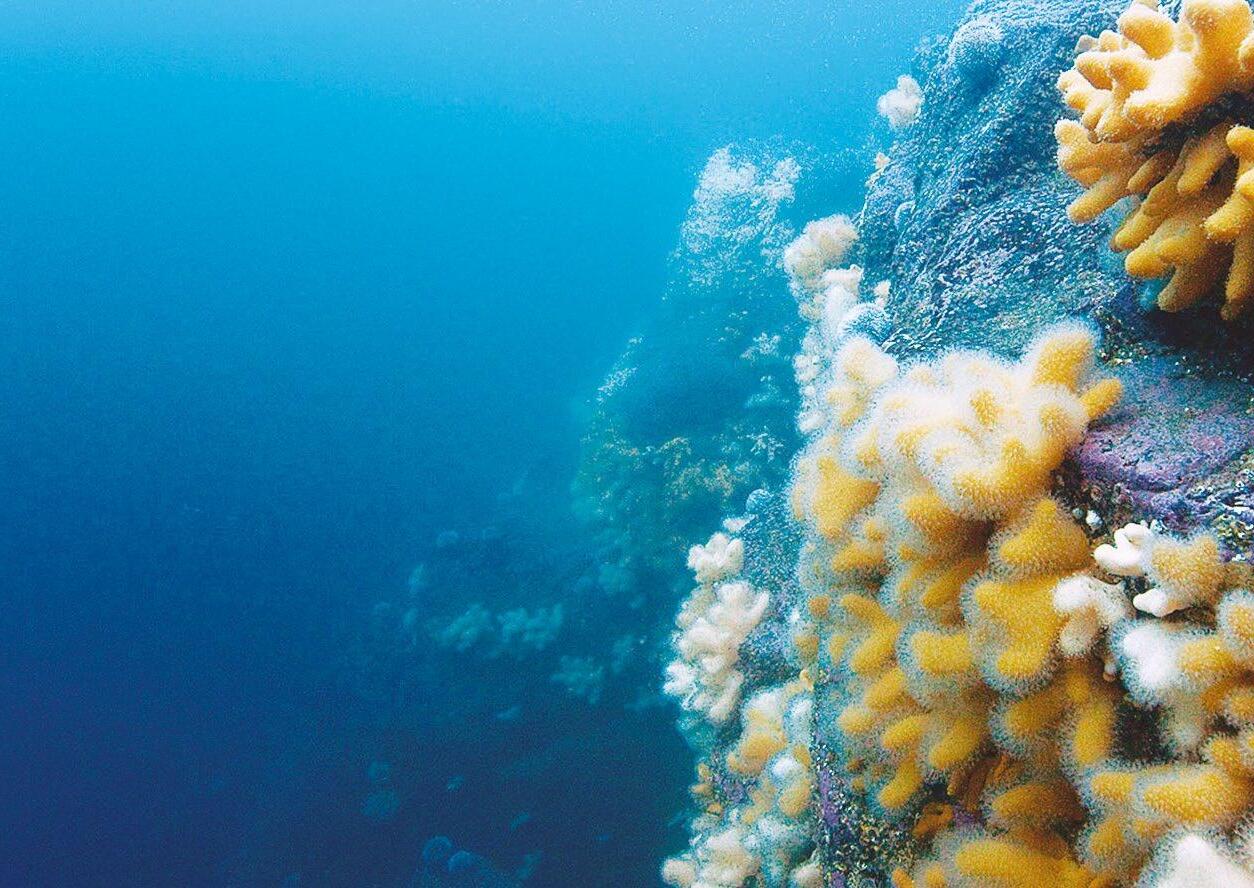
‘‘It is both enlightening and energising to see these six steps which can make the future a better place for us and all our children. By taking these actions we can live more in harmony with nature and the North Sea. Now that has to be something worth fighting for!”
Professor Dan Laffoley, Marine Vice Chair, IUCN’s World Commission on Protected Areas
We need a North Sea Recovery Network, a joined-up system of wild places at sea and along our coasts that is based on the best available science. This network allows animals to move from place to place and enables the natural world to adapt to change. It provides marine animals with places to live, feed and breed. It creates the underwater corridors and areas of habitat they need to move in response to climate change. It connects wild places and it brings wildlife into our lives. It can only do this effectively if it is treated as a joinedup, coherent and sustainably used network. This network would include Marine Protected Areas (MPAs) protecting precious habitats and species such as kelp forests, coastal wetlands, seagrass beds, rocky reefs, sandbanks, muddy plains and more creating Britain’s ‘Blue Belt’.
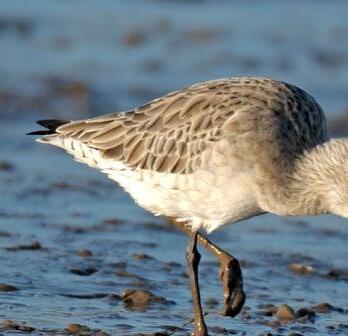
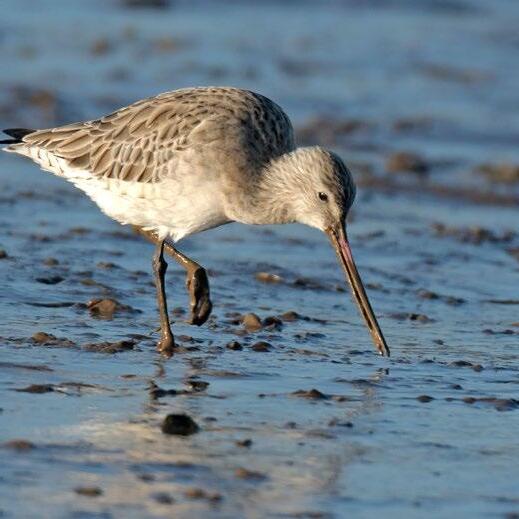

At least 60% of the North Sea is designated as Marine Protected Areas
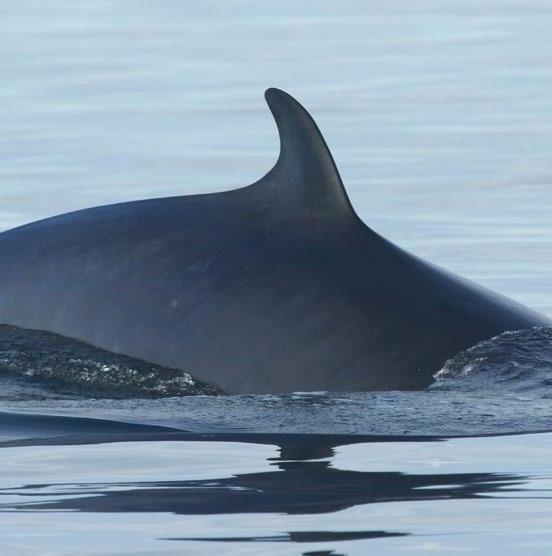
Our struggling marine wildlife will benefit from the protection it is afforded through a comprehensive, connected, sustainably used network of sites. The most damaging activities will be removed and others restricted so that wildlife and the place it calls home can recover and become resilient to climate change.
9 Designate a minimum of 60% of the North Sea as effectively managed Marine Protected Areas by 2040.
9 30% of this network of MPAs should be fully or highly protected by 2030.
9 A whole site approach to management should be taken where appropriate to protect entire ecosystem services and not just individual features.
9 All activities occurring within MPAs must be sustainable and protecting the services these ecosystems provide.
9 The network must include more representative and a broader range of species, such as fish and elasmobranchs, as well as blue carbon habitats.
9 Management should go beyond maintaining feature condition and seek to improve the condition of protected features.
9 Greater long term financial investment in resources for robust research and monitoring, management and enforcement of protected sites should be made and management measures reviewed accordingly.
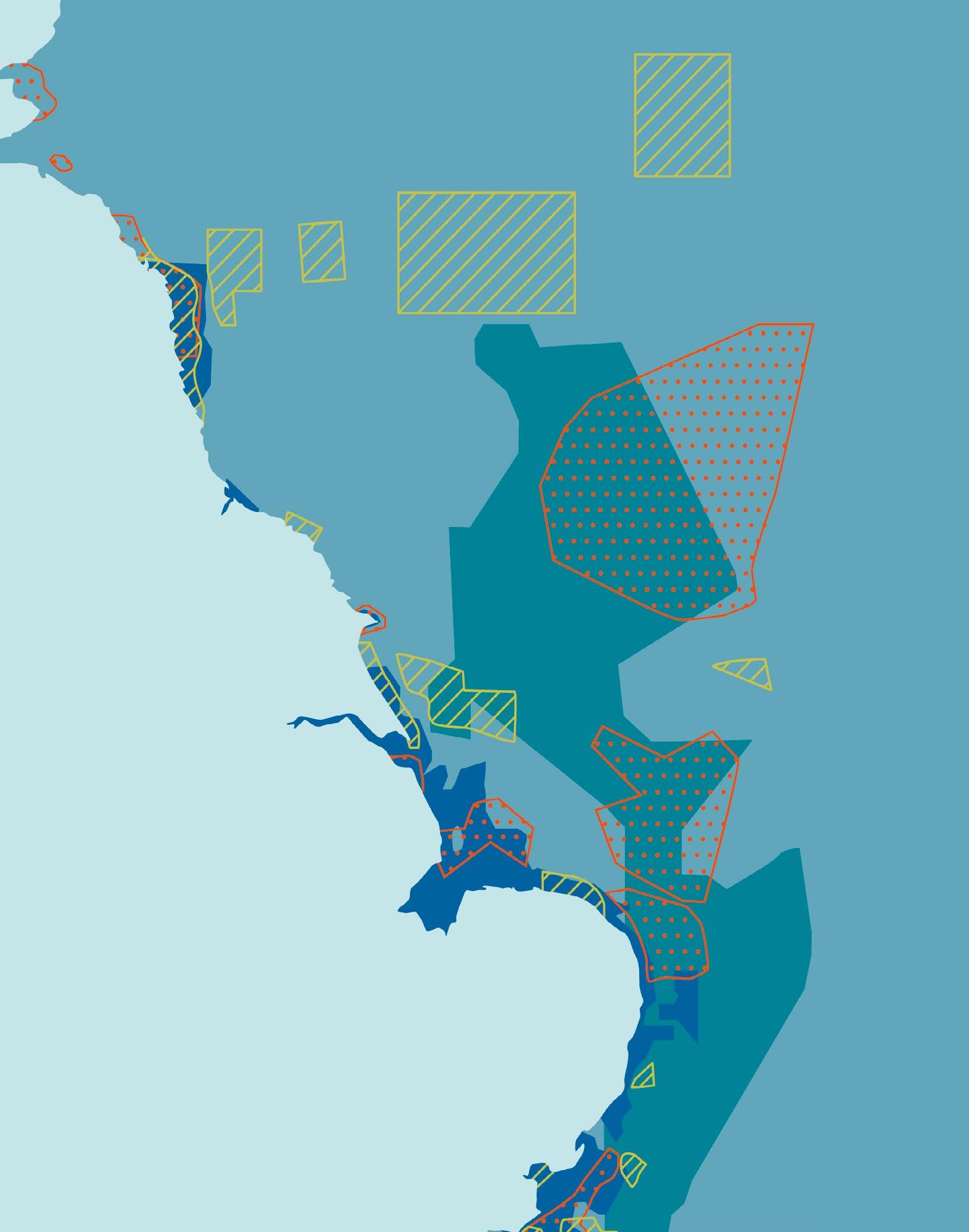
Marine Conservation Zones (MCZs)
Special Protection Areas (SPAs) Special Area of Conservation (SACs)
With so many competing interests in our seas’ resources, ensuring that we plan for their sustainable use is critical if we are to safeguard them for the future. To ensure this is achieved within the North Sea within 20 years requires the development of an effective, robust Regional Sea Plan which delivers truly sustainable wider sea management. Maritime industries, renewable technology developers, fishers and others using North Sea resources should do so within strict environmental limits that provide the checks and balances needed to ensure long term prosperity of dependent uses and ocean health. Achieving these plans will require co-operation and integration with other spatial plans but with the right guidance and ambition we can create a sustainably used, shared space for all.

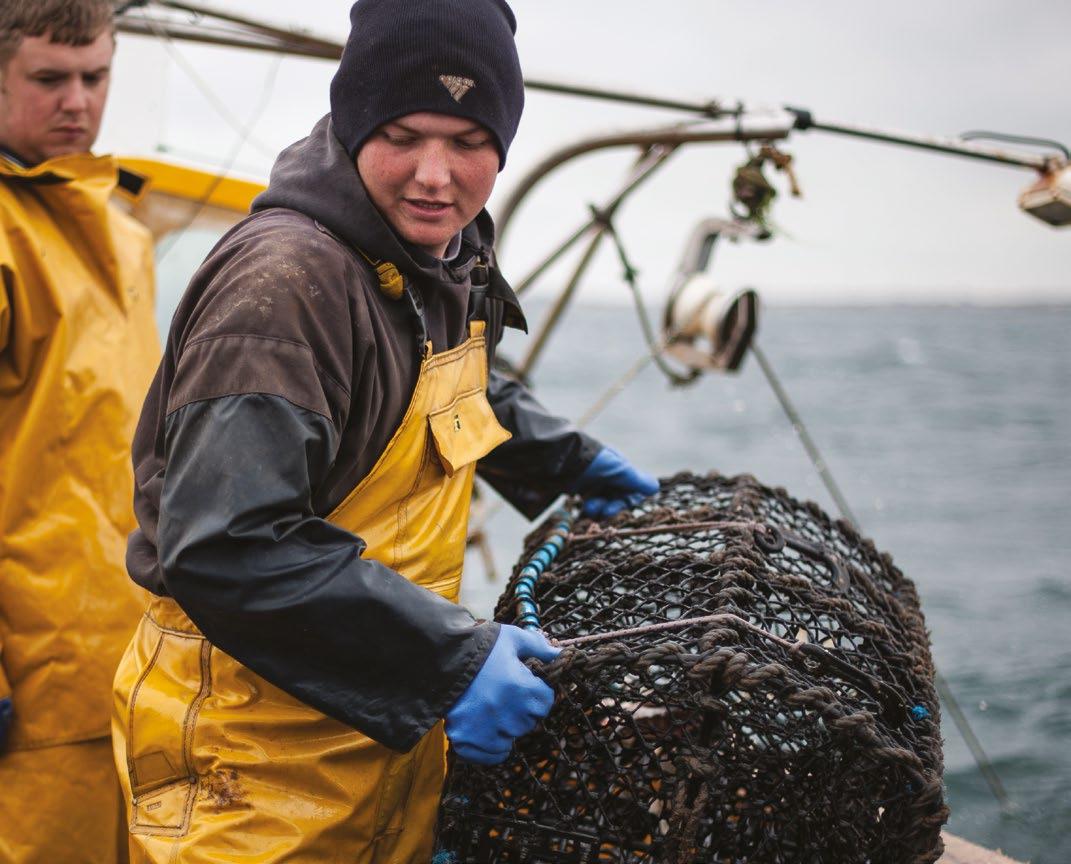
All development and activity within the North Sea is sustainable

The recovery and sustainable development and use of the North Sea and its resources is given significantly greater consideration across sectors. Environmental damage is avoided, reduced, mitigated or compensated and ‘netgain’ for the environment is an integral component of all developments and activities. Strategic targets for improving and restoring the marine and coastal environments have been agreed and these are delivered through partnerships across industry, scientists, eNGOs and regulatory bodies. Strategic approaches to delivery are identified and implemented.
‘‘The continuing and growing challenges of dealing with climate change and habitat degradation mean that all marine industries have more to offer. NetGain, if properly managed to deliver agreed conservation targets, will add a further positive dimension and exciting opportunities to industry projects.”
Peter Barham, MBE, Chair of the Sedbed User and Developer Group
9 Development and delivery of environmental policies that prioritise the recovery of the North Seas wildlife and habitats alongside net zero being achieved.
9 Implement a robust legislative framework with sufficient clauses, penalties, and back-stops to tackle the challenges of the 2020s onwards including a revised marine planning system.

CAIRNS
9 Refresh the existing Marine Plans to develop a specific ‘fit for purpose’ plan for the North Sea that integrates with those of its neighbours.
9 Champion effective coordination mechanisms across all sectors that have an impact or interest in the North Sea to deliver a sustainable seascape across the North Sea region.
9 Support the introduction of biodiversity ‘net gain’ that looks to remove pressures and reduce overall impact.
9 Individual activities, including fishing, should be considered alongside the cumulative impact of multiple activities occurring.
9 Work in partnership with stakeholders to change and trial new opportunities that reduce our footprint on the marine ecosystem e.g. low impact technology.
9 Set sustainable limits on activities that help to deliver ‘good environmental status’.
Alongside reducing pressure on marine and coastal systems and allowing natural recovery to occur, it is critical that we take urgent, positive action to restore marine habitats and species. A suite of management tools can be used to achieve this restoration and recovery, from the use of Marine Protected Areas with varying levels of protection, to active restoration of degraded or now absent marine and coastal habitats. Together these timely actions will help us address the marine biodiversity crisis as well as mitigate against climate change by investing in the protection and maintenance of ecosystem services including ‘blue carbon’ stores.
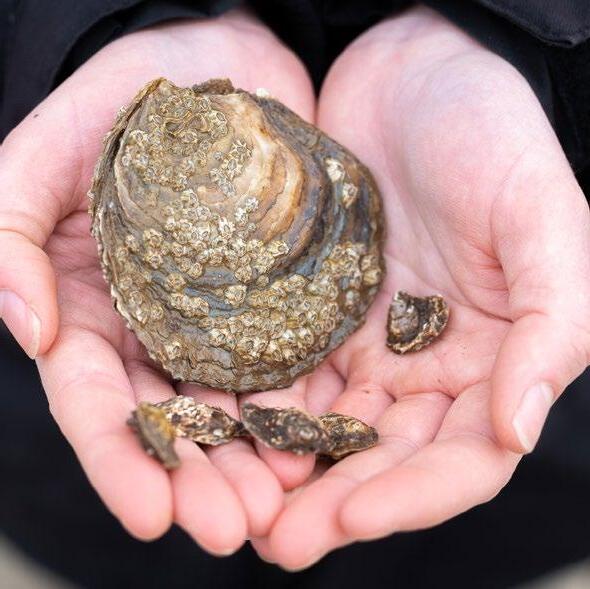


Previously degraded habitats will be recovered and support populations of marine animals like whales, dolphins, sharks and fish that will increase in number. Blue carbon habitats like seagrass and saltmarsh will be protected through effective marine spatial planning and the MPA network and will help to mitigate against the impacts of a changing climate.
Champion the need for comprehensive restoration policies to be implemented.
9 Identify and map out restoration possibilities and priorities in the North Sea.
9 Facilitate pilot restoration project delivery for habitats and species including blue carbon stores.
9 Innovate through the creation of species restoration trials, new fishing practices, gear trials and mechanisms to allow recovery of previously degraded habitats.
9 Develop projects in partnership with stakeholders that provide multiple ecosystem benefits while supporting sustainable fisheries or alternative livelihoods in coastal communities.
9 Use best practice examples to scale up restoration and recovery efforts enabling subtidal and intertidal habitat restoration and protection across the North Sea.

Marine and coastal ecosystems, like saltmarsh, seagrass beds, mud and sediments, act as blue carbon stores and provide a natural way of reducing the impact of carbon on our atmosphere through sequestration. Human activities that remove or degrade these carbon stores will release carbon back into the atmosphere. Protecting carbon within North Sea ecosystems through robust, sustainable management of our activities will ensure this nature-based solution to climate change remains intact in the long term.

The health of the natural environment is inextricably linked to our physical and mental health and well-being. Our coasts are particularly important in this context given their relatively high level of accessibility to all socio-economic groups in the UK. Taking people with us on this journey of nature’s recovery is central to securing greater responsibility and stewardship of the natural world for the benefit of people and wildlife. Working with local communities and sea users will be key to navigating a path towards greater awareness of our marine wildlife, the challenges our North Sea faces and what we can all do to help.
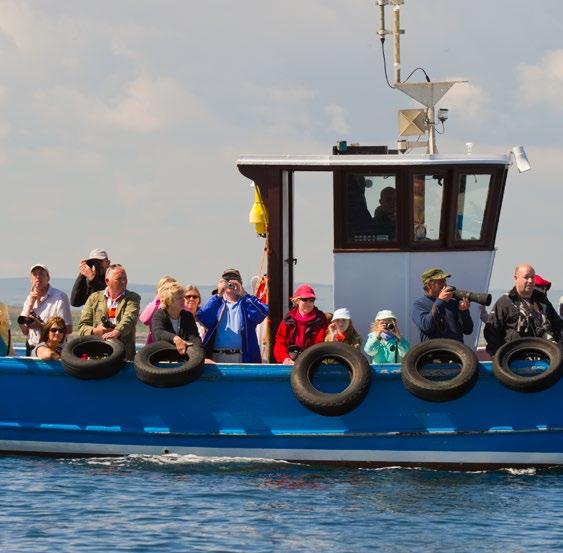
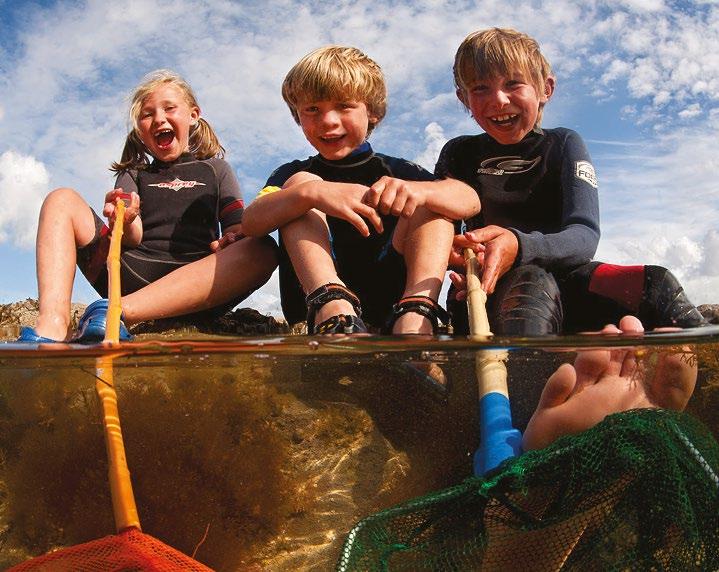
People know how special the North Sea is and why we must protect it

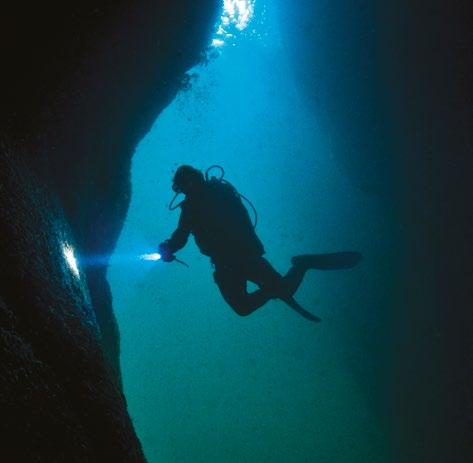
People know that the North Sea is home to iconic species and can name animals they commonly see when they visit the coast. They understand what the sea does for people and the importance of protecting it. Coastal communities seek support and involvement in marine management to protect the North Sea and its wildlife. Local people are strong stewards of the sea, raising awareness and taking action locally.

9 Share knowledge of the riches the North Sea holds, challenging misconceptions about it being cold, dark and empty of life, through dedicated communications.
9 Engage and educate people about the ecosystem services provided by the North Sea and the ways in which these benefit people as well as wildlife.
9 Deliver targeted education and outreach events and activities that involve people in marine conservation projects to increase their understanding and commitment.
9 Foster collaborative action through specific ‘calls to action’, for example, citizen science projects. These projects allow people to take action through the provision of skills and knowledge in an increasingly self-led way.
9 Empower people to take independent and sustainable action to protect the North Sea and its wildlife.
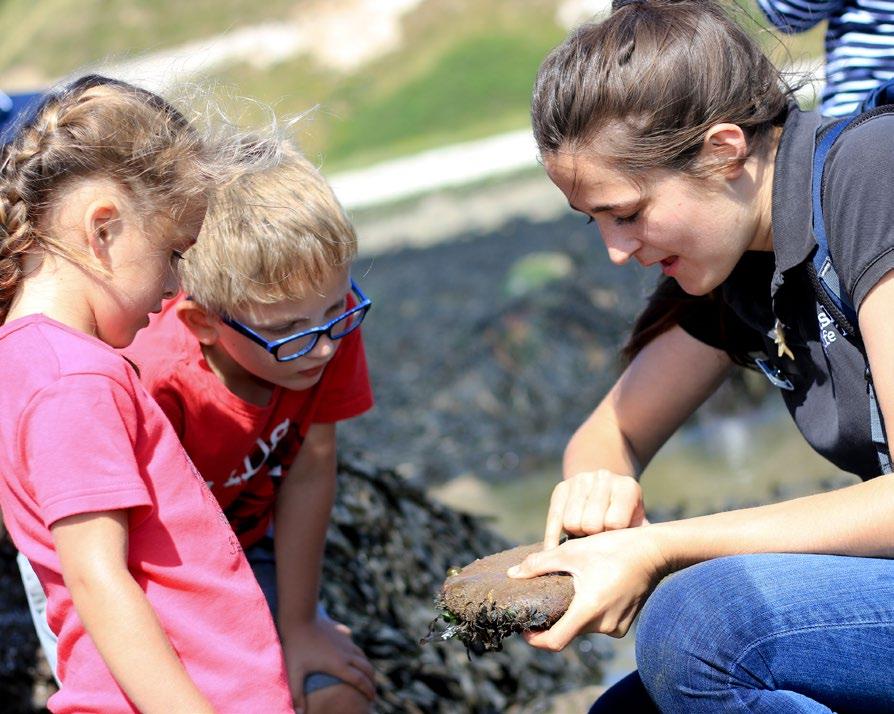
Achieving this vision will require integration on a number of different levels. A ‘source to sea’ approach to conservation must be taken to ensure that the management of the land-sea interface and its connecting pathways of coast, estuaries and rivers is holistic in nature rather than working in silos. National and international policy integration, delivery and coordination across sectors must be improved to ensure that all policies drive positive environmental outcomes rather than working against each other. It will be vital for European countries to work together to agree on and implement nature-based solutions in a joined up way to ensure connectivity across the whole North Sea ecosystem. Government administrations will need to be well resourced and work together effectively to ensure smooth and coherent policy delivery alongside environmental NGOs, the scientific community and industry.
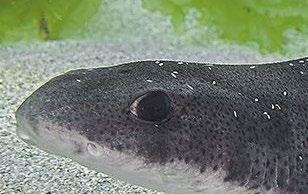
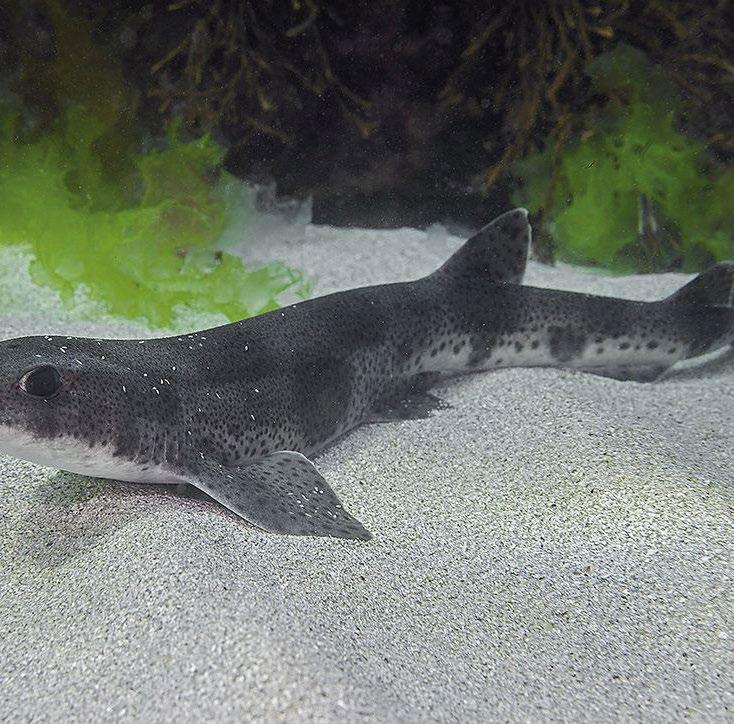
Geographical, political and administrative boundaries are interconnected and effective
Greater connectedness between agencies, government departments, habitat types and geographical areas allows for more effective and joined up implementation of marine conservation and sustainable use of the North Sea. Artificial boundaries have been removed.
9 Deliver ‘source to sea’ projects developed across the region to ensure management approaches are designed with interconnected and multiple habitats at the centre.
9 Support integrated policy delivery, ensuring that climate policy intersects with that designed to protect biodiversity.
9 Develop strong new partnerships and build on existing ones including the development and support of coastal partnerships.
9 Advocate for long term commitment by Government to well resourced departments and agencies to ensure appropriate delivery, management, monitoring and enforcement of the environmental legislation.
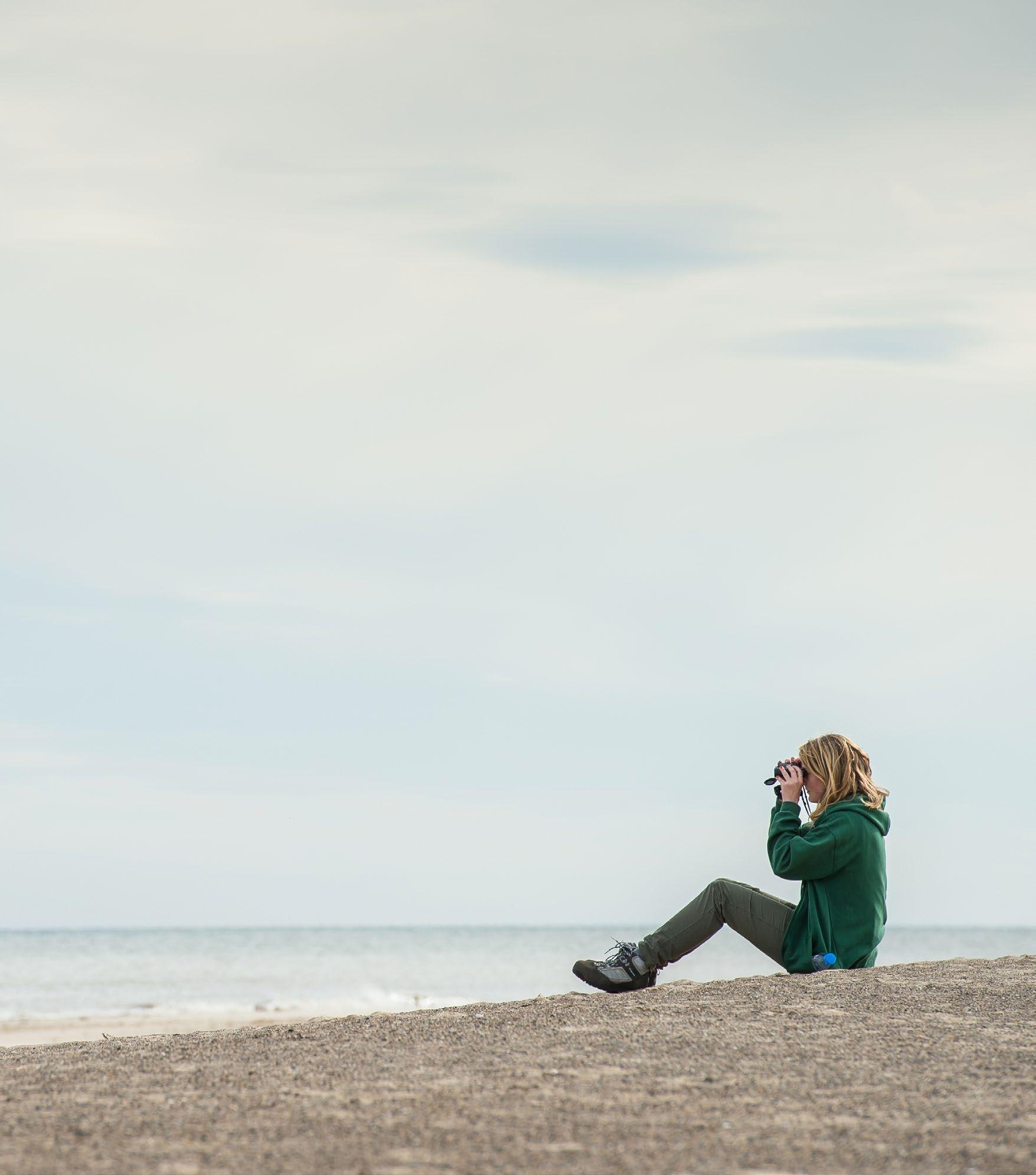
“The scale of the challenge is huge.
If
we’re
to truly bring about recovery of the North Sea we must work together across sectors, disciplines and artificial boundaries to turn the tide on the current picture of decline. Collaboration and communication will be vital to securing the best outcomes for our natural environment and for us”.
Kirsten Carter, Principal Policy Officer, RSPB
The climate emergency has driven a commitment by the UK government to achieving net zero emissions by 2050. Yet we cannot tackle the climate crisis without similar ambition to meet the biodiversity crisis head on – the two are inseparable. The climate crisis is driving nature’s decline; the loss of wildlife and habitats leaves us ill-equipped to reduce our emissions and adapt to change. Nature in the UK is in a sorry state and important habitats are damaged and declining. Rapid cuts in our emissions must be matched with determined action to fix our broken ecosystems so they can help stabilise our climate.
While we welcome bold steps to reduce our carbon emissions we must ensure that in doing so we do not degrade our natural world further. A good example of this is the ambitious and rapid development of offshore wind energy. This renewable energy source will be critical to helping us meet our climate goals but it is not without impacts. The wind turbines (and associated cabling routes) cause significant damage to the seabed and coastal zone, and represent a potential collision and noise hazard for wildlife. In driving forward the switch to sustainable energy sources we must ensure that the infrastructure put in place is done so sensitively and strategically to lessen the impacts that it will have on our wildlife and wild spaces. To achieve this we must ensure that climate and biodiversity policies are co-ordinated in their implementation to drive positive gains for both our climate and wildlife.


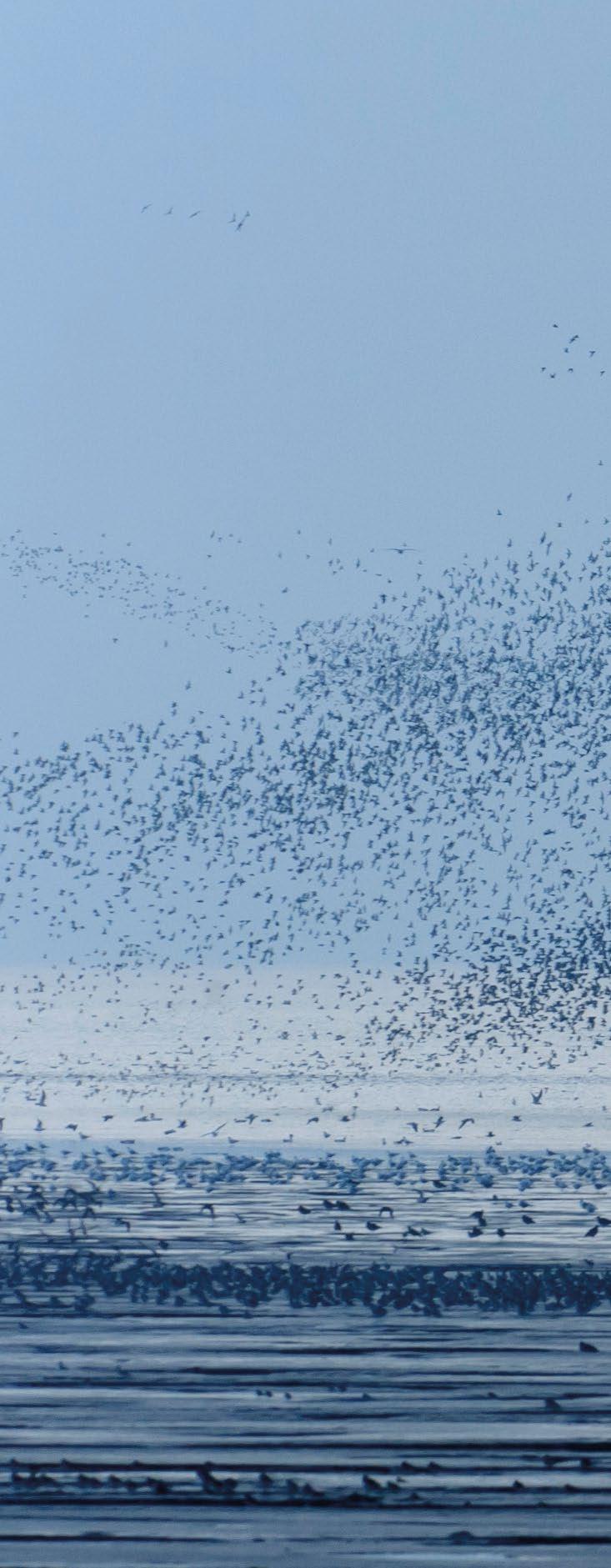
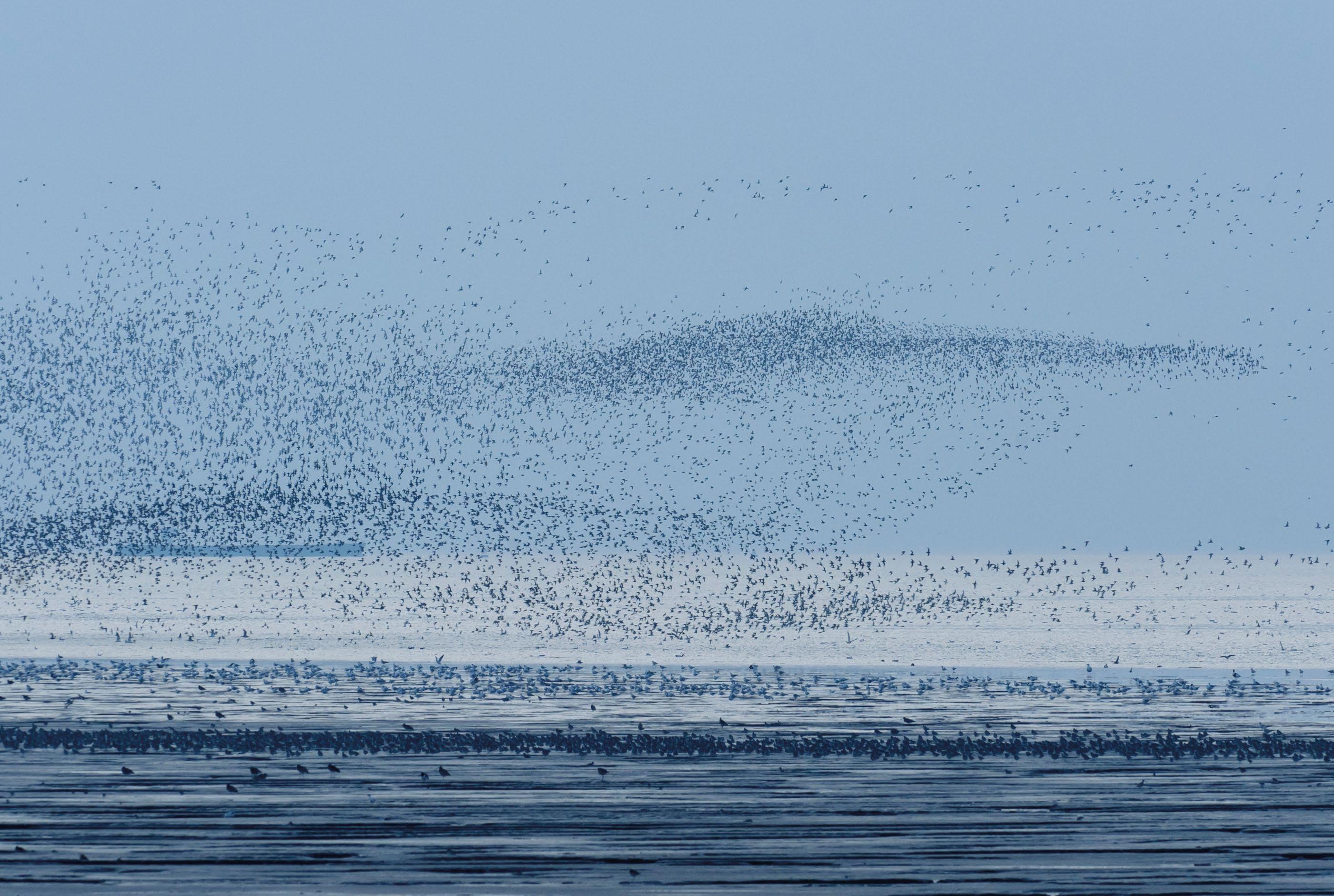
Underpinning all of the above is a regulatory and financial system that incentivises stewardship of and long term investment in our North Sea amongst all stakeholders. This means ensuring development is delivered within strict, pre-determined environmental limits and is subject to checks and balances. Policy creation and implementation must recognise that the issues of health, economic resilience, climate change and biodiversity loss are interconnected. Economic investment in the North Sea and its natural capital can move us towards new green jobs, a healthier environment for all of us, and greater resilience for our businesses and communities.
Industry investment in the health of the North Sea is harnessed

Investment in the recovery and future health of the North Sea is legislated for and incentivised by Government to ensure all sea users contribute towards this shared responsibility. Businesses recognise that the natural world underpins our economy and that the environment, including the sea, has limits which should be accounted for.

9 Embed a new Green Coherence Principle in all future government policies and policy reviews, in order to remove the hidden costs of damage to biodiversity, improve climate resilience and optimise the benefits of public spending as part of a green recovery.
9 Set environmental funding priorities in line with current and projected needs and provide sufficient funds for longterm restoration programmes.
9 Establish mechanisms whereby marine related industries support recovery of the marine environment through genuine improved environmental performance and investment in a nature recovery fund.
9 Work with private sector businesses to find innovative solutions to environmental problems and secure investment in these.
9 Introduce a streamlined licensing system for environmental projects delivering environmental benefits.
9 Learn from others including those who may not be natural partners.
The North Sea Wildlife Trusts have identified five priority targets to achieve in the next five years.
15% of the North Sea network of Marine Protected Areas should be highly protected.
A co-ordinated approach to offshore energy transmission should be agreed and implemented reducing the number of cabling routes in the North Sea.
Five habitat restoration projects will be identified and successfully delivered within the North Sea.
Habitats will be protected within the North Sea based primarily on their blue carbon storage and sequestration value.
All existing North Sea MPAs have management measures and active monitoring in place.



The strategy outlines our priorities for working towards achieving our long-term vision for the English North Sea over the next 20 years.
This strategy is not an action plan; we’ll need to work together to meet the key strategic goals. The strategy isn’t a static document. It will be regularly updated and refreshed as our knowledge increases, technology changes and policy and legislation evolve. We’ll review our progress towards achieving these goals internally on an annual basis and report on progress externally every 5 years. Finally, the strategy isn’t perfect; we are taking action as quickly as possible based on the current knowledge and resources available to us. Collaboration between multiple partners will be key to our shared success.
If you’d like to discuss this strategy with us please contact your local North Sea Wildlife Trust.
The following local Trusts make up the North Sea Wildlife Trusts partnership:
Northumberland Wildlife Trust
Durham Wildlife Trust
Tees Valley Wildlife Trust
Yorkshire Wildlife Trust
Lincolnshire Wildlife Trust

Derbyshire Wildlife Trust
Nottinghamshire Wildlife Trust
Leicestershire & Rutland Wildlife Trust
Bedfordshire-Cambridgeshire-Northamptonshire Wildlife Trust
Norfolk Wildlife Trust
Suffolk Wildlife Trust
1. https://assets.publishing.service.gov.uk/government/uploads/system/uploads/attachment_data/file/921262/marine-strategy-part1-october19.pdf
2. https://nbn.org.uk/wp-content/uploads/2019/09/State-of-Nature-2019-UK-full-report.pdf
3. https://www.che-project.eu/news/main-sources-carbon-dioxide-emissions
4. http://www.mccip.org.uk/impacts-report-cards/full-report-cards/2020/
5. New tools to evaluate plastic ingestion by northern fulmars applied to North Sea monitoring data 2002–2018- ScienceDirect
6. Distribution of skates and sharks in the North Sea: 112 years of change- Sguotti- 2016- Global Change Biology- Wiley Online Library
7. FisheriesOverview_GreaterNorthSea_2020.pdf (ices.dk)
8. The-Sixth-Carbon-Budget-The-UKs-path-to-Net-Zero.pdf (theccc.org.uk)
9. North Sea Transition Deal (publishing.service.gov.uk)
10. WEF_The_New_Plastics_Economy.pdf (weforum.org)

